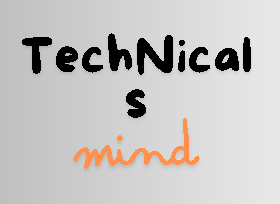Anxiety is a pervasive and often debilitating condition affecting millions of individuals worldwide. Its complexity is underscored by a sophisticated interplay between psychological experiences and neurobiological processes. Understanding the neuroscience of anxiety provides critical insights into how the brain responds to stress, offering pathways for effective interventions and treatments. This article delves into the mechanisms underlying anxiety, exploring how the brain’s response to stress can manifest in various ways and how this knowledge can be applied to enhance therapeutic strategies.
The Brain’s Stress Response System
At the core of anxiety is the brain’s stress response system, primarily governed by the hypothalamic-pituitary-adrenal (HPA) axis. This axis is a complex network involving the hypothalamus, the pituitary gland, and the adrenal glands. When faced with a stressor, the hypothalamus secretes corticotropin-releasing hormone (CRH), which prompts the pituitary gland to release adrenocorticotropic hormone (ACTH). ACTH then stimulates the adrenal glands to produce cortisol, a hormone crucial for managing stress.
Cortisol’s release prepares the body to handle stress by increasing glucose availability, modulating immune responses, and affecting various physiological functions. While this response is essential for acute stress management, chronic activation of the HPA axis can lead to dysregulation and contribute to anxiety disorders.
Neuroanatomy of Anxiety
Several brain regions are integral to the experience of anxiety, each contributing to different aspects of the stress response:
Amygdala:
The amygdala plays a pivotal role in the processing of emotional responses, particularly fear and threat detection. It acts as an alarm system, rapidly interpreting sensory information and triggering appropriate behavioral and physiological responses. Overactivity of the amygdala is commonly observed in individuals with anxiety disorders, leading to heightened fear and exaggerated stress responses.
Prefrontal Cortex (PFC):
The PFC is crucial for higher-order cognitive functions, including decision-making, planning, and emotional regulation. It helps modulate the amygdala’s activity, providing a regulatory check on emotional responses. In anxiety disorders, there is often reduced connectivity between the PFC and the amygdala, impairing the ability to regulate fear and anxiety effectively.
Hippocampus:
The hippocampus is essential for memory formation and contextualizing experiences. It interacts with the amygdala and PFC to integrate emotional memories and guide appropriate responses. Chronic stress and elevated cortisol levels can lead to hippocampal atrophy, impairing memory and emotional regulation, and contributing to anxiety.
Insular Cortex:
The insula is involved in interoceptive awareness, which refers to the perception of internal bodily states. It helps individuals recognize and interpret physiological sensations, such as an increased heart rate or sweating, which are often associated with anxiety. Dysregulation in the insula can lead to heightened awareness and misinterpretation of bodily signals, exacerbating anxiety symptoms.
Neurotransmitter Systems and Anxiety
Neurotransmitters are chemical messengers that facilitate communication between neurons and play a significant role in regulating mood and anxiety. Key neurotransmitter systems implicated in anxiety include:
Serotonin:
Serotonin is involved in regulating mood, sleep, and appetite. Dysregulation of serotonin levels is associated with various anxiety disorders. Selective serotonin reuptake inhibitors (SSRIs), a class of antidepressants, are commonly used to increase serotonin availability and alleviate anxiety symptoms.
Gamma-Aminobutyric Acid (GABA):
GABA is the primary inhibitory neurotransmitter in the brain, counteracting excitatory signals and promoting relaxation. Reduced GABAergic activity has been linked to increased anxiety. Medications that enhance GABAergic transmission, such as benzodiazepines, are often prescribed to provide rapid relief from anxiety symptoms.
Norepinephrine:
Norepinephrine is involved in the body’s “fight or flight” response and helps regulate arousal and alertness. Elevated levels of norepinephrine can contribute to heightened anxiety and panic attacks. Medications targeting norepinephrine, such as certain antidepressants, can help modulate anxiety symptoms.
Genetic and Epigenetic Factors
Genetics also play a role in susceptibility to anxiety disorders. Twin and family studies have shown that anxiety disorders have a hereditary component, with genetic factors contributing to an individual’s risk. However, genetics alone do not determine anxiety; environmental factors and life experiences interact with genetic predispositions to influence the development of anxiety disorders.
Epigenetic mechanisms, which involve changes in gene expression without altering the DNA sequence, also contribute to anxiety. Environmental stressors can induce epigenetic modifications that affect the expression of genes involved in stress response and emotional regulation. These changes can influence an individual’s susceptibility to anxiety and potentially be passed down to subsequent generations.
Implications for Treatment
Understanding the neuroscience of anxiety has significant implications for treatment strategies. Current approaches include:
Pharmacological Treatments:
Medications targeting neurotransmitter systems, such as SSRIs, SNRIs (serotonin-norepinephrine reuptake inhibitors), and benzodiazepines, can help manage anxiety symptoms by restoring neurochemical balance. However, these treatments often come with side effects and may not address underlying cognitive and emotional processes.
Psychotherapy:
Cognitive-behavioral therapy (CBT) is a well-established treatment for anxiety, focusing on altering maladaptive thought patterns and behaviors. CBT can help individuals develop coping strategies and improve emotional regulation by addressing cognitive distortions and enhancing the connectivity between the PFC and amygdala.
Neurofeedback and Brain Stimulation:
Emerging therapies, such as neurofeedback and transcranial magnetic stimulation (TMS), aim to modulate brain activity directly. These techniques can potentially normalize aberrant brain function associated with anxiety, providing a novel approach to treatment.
Lifestyle Interventions:
Incorporating stress management techniques, such as mindfulness meditation, exercise, and adequate sleep, can complement traditional treatments and support overall mental well-being. These interventions can help regulate the HPA axis and enhance resilience to stress.
Conclusion
The neuroscience of anxiety provides valuable insights into the complex interplay between brain function and stress response. By understanding the neuroanatomical, neurotransmitter, genetic, and epigenetic factors involved, researchers and clinicians can develop more targeted and effective treatments for anxiety disorders. Continued exploration of the brain’s response to stress will advance our knowledge and improve strategies for managing and mitigating anxiety, ultimately enhancing the quality of life for those affected.

















